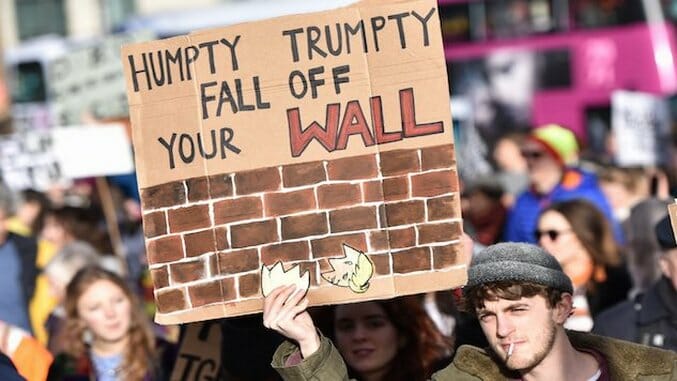Trump vs. Tourism: How Major U.S. Cities Are Fighting to Welcome Foreigners
Photo by 1000 Words/Shutterstock
It’s no surprise that President Donald Trump’s proposed travel bans have been toxic for the United States’ tourism industry. On January 27 Trump signed executive orders to bar people from seven countries—Iran, Iraq, Libya, Somalia, Sudan, Syria and Yemen—from entering the U.S. for 90 days. Nationwide protests broke out and judges were forced to pick a side, choosing to temporarily block the ban before it was ultimately defeated. Soon thereafter on March 6, yet another ban was unveiled and subsequently defeated on March 15. Though the bans didn’t last long, the “anti-welcome” sentiment did its damage and continues to dissuade international travelers from visiting the U.S.
According to recent data from Hopper, U.S. bound flight searches are down 17 percent overall since Trump’s inauguration, while weekly search demand for flights to the U.S. is down 33 percent from countries included in the travel ban. Adam Sacks, president of Tourism Economics, a travel research firm, said the annual number of foreign visitors to the United States could fall by 6.3 million between 2016 and 2018 “because of reactions to Mr. Trump’s words and actions, such as pledges to pull out of international trade agreements,” according to The New York Times.
As a result, major cities around the country are revamping their branding to emphasize the message that international visitors are indeed welcome, despite the administration’s alienating, anti-inclusion rhetoric.
Tourism Economics reevaluated Los Angeles’ tourism forecast to understand the effect of all Executive Orders including the first travel ban, and projected that L.A. County could suffer a potential three-year loss of 800,000 international visitors, totaling $736 million in direct tourism spending. In response, Discover Los Angeles introduced a new campaign, #EveryoneIsWelcome, to underscore diversity and inclusivity, launching with a video featuring L.A.’s creative community coming together in a message of hope, wonder and a willingness to accept everyone with open arms.
“People from 140 countries who speak over 224 different languages reside in Los Angeles, and it is one of only two U.S. cities without a majority population. Diversity comes through in all facets of our culture from art and cuisine to music and dance,” Don Skeoch, CMO at Discover Los Angeles told Paste. “It is our hope that our #EveryoneIsWelcome initiative will help to mitigate some or all of the potential loss that our research partners are projecting. There is a tremendous opportunity for our industry to band together to ensure visitors understand that they are welcome; a collective rallying cry would go a long way.”
Meanwhile on the East Coast, New York City estimates a possible drop of 300k international visitors, which make up at least $600 million in direct spending. Though international visitors only comprise 20 percent of visitor volume, they make upward of 50 percent of outside spending. Fred Dixon, the chief executive of NYC & Company, the official destination marketing organization for the five boroughs of New York City, said in February that “Mr. Trump’s statements and actions had changed perceptions about the hospitality of the United States just as prospective tourists are making vacation plans for 2017,” according to The New York Times.